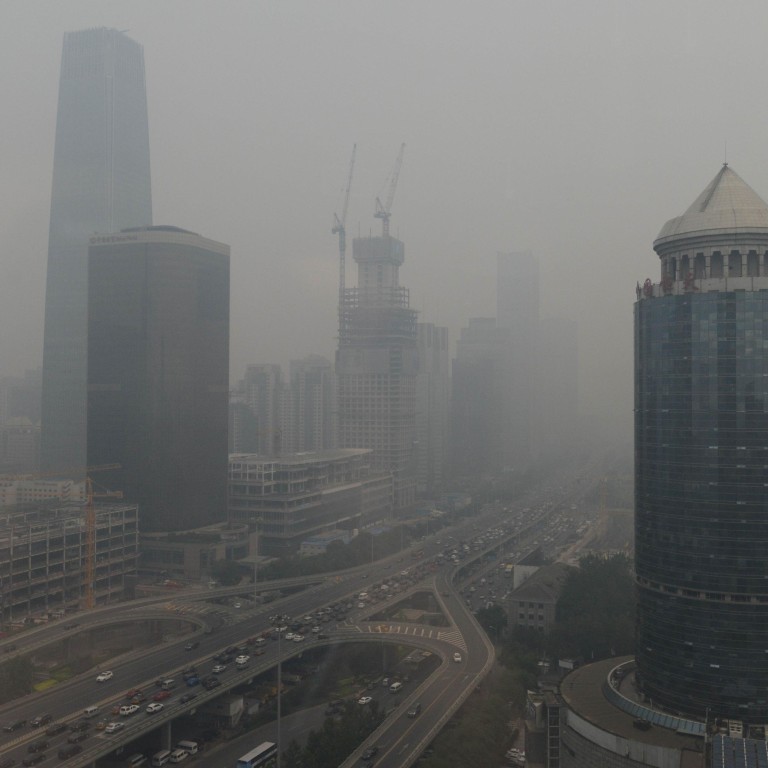
Bond market innovation could help China climate change pledge
World leaders have agreed to limit global average temperature rises to within 2 degrees celsius. To achieve this, the Intergovernmental Panel on Climate Change recommends a 40-70 per cent reduction in greenhouse gas emissions by mid-century from 2010 levels, and decarbonisation of the global economy by the end of the century. The leaders of the G7 countries emphasised the importance of these targets at their summit in Germany last month.
As the world’s largest greenhouse gas emitter, China has an important role to play in meeting the 2°C limit. China, along with all 196 Parties to the UN Framework Convention on Climate Change, will meet in Paris in December to negotiate a universal climate agreement.
Countries are in the process of submitting their pledges towards this agreement and some 17 parties covering over three-fifths of global emissions have already done so. For China, the target is for emissions to peak around (or before) 2030 and to reduce carbon intensity of GDP (the ratio of carbon emissions to GDP) by 60-65 per cent by 2030 (from 2005 levels).
China’s environmental problems are well known and while climate change and the environment are not the same, they overlap, and many pollution problems may be exacerbated by climate change. The government declared war on pollution in 2014 and has passed a new environmental law aimed at stopping further degradation and begun the process of cleaning up the environment.
As such, more environmental policies will almost certainly be implemented under the 13th Five-Year Plan from 2016 to 2020. It is clear that China’s war on pollution and the transition to a low-carbon economy require substantial financing.
Bond markets have traditionally been used to fund large projects such as infrastructure. The ‘green bond’ market has emerged internationally in recent years to fund ‘green’ projects. They are guided by the Green Bond Principles, voluntary guidelines drawn up by issuers and bankers in 2014 and revised in 2015.
Essentially a green bond’s proceeds must be used for environmental or climate purposes. The difficulty of defining ‘green’ and establishing standards for levels or ‘degrees of green’ is well recognised. Market participants are working towards making these standards clearer as well as providing independent assurance in terms of environmental credibility and financial auditing of the proceeds from green bonds.
China’s bond markets are now the third largest in the world, with almost US$6 trillion of bonds outstanding. However, there is much room to grow – the ratio of the bond market to GDP is less than 1 per cent. In China, most financing still comes from the banking system.
For example, over the past few years around three-fifths of the total funds raised by companies through the financial system came from loans. Higher yields, a more independent monetary cycle as well as exposure to China’s economy and the expectation of RMB appreciation, make China’s bond markets appealing to foreign participants.
However, given the licences required by foreign participants and the complicated regulatory regime, around 98 per cent of bonds outstanding are still held by domestic investors (according to Chinabond).
China has been developing a framework for green credit financing since 2007 and the definitions are being continually refined by the authorities. Using a fairly broad definition, which includes energy and water efficiency, green development and renewables, green project lending in June 2014 was almost US$670 billion, according to the China Banking Regulatory Commission.
The People’s Bank of China and the UN have also been researching how to establish a green financial system in China, with green bonds part of their recommendations.
Given its commitment to climate change and to cleaning up its environment, there is vast potential for green bonds in China. However, there are many challenges in establishing a green bond market – for instance both issuers and investors require more incentives, and regulations need to be tightened to ensure better transparency with regard to eligible projects and use of proceeds. The People’s Bank of China is in the process of establishing some green bond guidelines for the interbank market.
Many parts of the economy stand to benefit from green bonds. The seven strategic emerging industries provide a good starting point – for example, energy efficiency and environmental protection, new energy such as renewables, bio-agriculture and new energy vehicles.
The measures detailed in China’s Paris climate pledge – such as controlling total coal consumption, industrial and building efficiency, increasing carbon sinks, and enhancing overall climate resilience – are also potential targets. Looking ahead, the 13th Five-Year Plan should provide a more favourable environment for green bonds as China channels funds to where they can help build a cleaner, modern economy.
Chan Wai-Shin is a climate change strategist at HSBC
